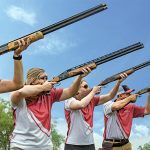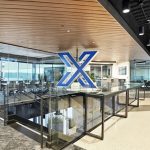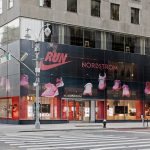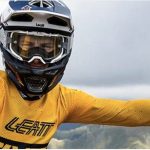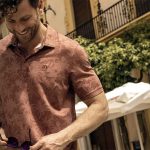Industry companies once again hit the road over the past couple weeks at the Banc of America Securities Consumer Conference and the Citigroup Small and Mid Cap Emerging Growth Conference, giving the investment community and the world in general a bit deeper look into their individual businesses.
Several companies commented on pricing pressures coming out of China, offering different ways of dealing with those pressures. Others focused on plans for the year ahead and for 2009, but were still generally wary of what the road may hold in the current retail environment.
Dicks Sporting Goods Inc. used the conference to crow about being first in the two most important categories in the sporting goods retailing industry: sales and profits. Chairman and CEO Edward Stack trumpeted the companys impressive financial performance over the last five years – a 19% capitalized annual growth rate, a 25% sales growth rate and a 31% earnings growth rate. DKS claims to be the top retailer for TaylorMade, Callaway, Under Armour, Nike Golf and The North Face.
With its acquisition of 15 Chicks Sporting Goods stores in Southern California, it will become the largest retailer of Volcom, Quiksilver and ONeil – brands it plans to continue carrying in Southern California and possibly add elsewhere. Yet with $3.9 billion in sales, the retailer still sees plenty of room to grow in the fragmented $50 billion industry.
Stack sees the company growing from its current 340 stores to 800 in the U.S. and increasing operating margins 30 points annually by replacing lower margin brands with its own private brands.
“Our private brands are now replacing many of our private label products,” he said of products which DKS designs and sources on its own and then markets under licensing agreements with prominent brands like Nike, Umbro, Reebok and adidas. The adidas baseball equipment program was described as “off to a roaring start” since its December launch.
Stack said golf balls that Dicks has developed under a licensing agreement with Slazenger rank one, five and eight in terms of sales.
“The golf ball margin rates here are about 2,000 basis points higher than the brands that they replace,” he said, adding that they are now also being sold at the Golf Galaxy chain.
Stack also sought to distance his company from more fashion driven mall-based retailers, a distinction that allows DKS to limit its SKU overlap with mass merchants to about 10% of its products, accounting for less than 10% of sales.
“It allows our results to be more predictable and less volatile than some others,” he said.
Specialization in a single sport is driving the DKS team sports business.
“So many of the kids are really focused on one sport, so they're replacing their products more often,” he said. “They're buying higher AUR (average unit retail) products for these sports, and it's really been very good for our business.”
Stack said golf now represents 15% of Dicks $3.9 billion in annual sales, making it the largest retailer with every vendor it does business with.
Finally, he said the Dicks outdoor business faces the most competition, including big box retailers like Cabelas, Bass Pro and Gander Mountain and hundreds of independent specialty retailers.
Under Armour spent a great deal of time talking about its efforts in footwear, one of five levers the company sees itself pulling to maintain a high growth rate.
According to Kevin Plank, chairman and CEO, UA will see growth from continued sales increases in the mens business; the womens business eventually growing to be the largest category for the company; international becoming a larger part of the overall equation; sales increases in direct-to-consumer; and footwear.
Looking to 2008, UA expects sales to grow 26% to 28% to $765 million to $775 million, with strong growth across apparel, footwear and international. Operating income is also projected to grow in that 26% to 28% range.
For 2007, mens sales grew 36%, while womens grew 35%. For womens, Plank commented that the focus will need to shift from just the core athlete on the field to also include the woman off the field.
In its direct-to-consumer business, UA currently operates 17 outlet stores with plans to open an additional five to six stores this year. Plank said the company will complement the first full-priced retail store opened in Annapolis, Md. this year with three to four more stores.
Speaking about the companys footwear initiatives, Plank said that the entry into football cleats was a means of gaining acceptance as a footwear brand by the end consumer. The decision to move into performance training as the companys first non-cleated model derived from a category that had been neglected by the market, allowing UA to introduce new product specifically for the athlete. According to Plank, the modern athlete is doing more in the gym than just running shoes are designed for, specifically, they need lateral stability, which the UA shoes provide. UA will launch three styles in mens and two in womens with price points from $80 to $100.
The footwear team itself has grown from roughly 15 or 16 people when the cleat launched, to more than 80 today.
Plank would not comment directly on whether the shoes will be in Foot Locker with the initial launch, but did say that “only those partners that have been selling our apparel prior to this are the partners that will actually be carrying the product into the launch.”
Finally, Plank said that “the way that we'll define success for this company at year-end is of course sell-through and what happened with our training shoes, but more importantly how we're positioned going forward for additional footwear categories of business.”
Wolverine World Wide Inc., which makes Merrell, Patagonia and Sebago footwear, expects average footwear prices to rise in the 2% to 5% range this year due to price pressures coming out of China, said President and CEO Blake Krueger.
“I think the industry as a whole is going to see some price increases this year,” Krueger said during a presentation to investors. “I think they will see price increases in the 2% to 5% range. Companies like us, how are we dealing with that? We're trying to engineer our product around that and not take the quality out, but engineer our product around it. We're trying to stay flexible on the sourcing side, whether that means Indonesia, a bigger presence in Vietnam, a bigger presence in India. And lastly, I think a lot of companies are just going to have to pass some of those costs on to the consumer. But one thing I've learned over the years, if the footwear is right, people are going to buy the footwear at $100, and if the footwear isn't right, they aren't going to buy it at $50.”
Krueger said WWW expects to deliver its eighth record year of sales and earnings this year. “ROA last year was 14.1%, ROE was 19.1%,” Krueger said.
“We expect these, frankly, to hit the 15% and 20% levels at least for 2008'” he said. “And we're focused on organic growth that is two to three times faster than the overall market.”
Brown Shoe, parent of Famous Footwear, expects footwear costs to rise from 5% to as much as 12% this year due to rising wage pressures in China. Mark Hood, Brown Shoe Co. SVP and CFO, said he expects the biggest price increases to come on lower-priced shoes.
“At the lower price points, the materials and labor are a higher percentage of the cost of the shoe,” said Hood. “So therefore, they're going to experience a greater price increase on a percentage basis. We expect those price increases to hit with shipments coming out of China starting in June and July.”
Asked what's driving the price gains, Hood said it comes down to labor and increased enforcement of existing labor laws within China putting an increasing pressure on the labor component of the shoe. He also noted that Brown is seeing material cost increases as it relates to petroleum, and lastly, currency issues.
Hood said Brown has a 600-person sourcing office in China, which allows the company to meet the requirements of serving many channels of distribution. Hood expects Famous to weather any economic downturns better than stores serving lower-income customers.
“I think our core customer at Famous Footwear, our target customer has household incomes of about $85,000 a year. The typical family of three, suburban located, is probably able to weather the storm better than those as the lower end of the economic scale. I think the biggest pressures will be at the lower end of the price channel.”
Collective Brands showed a business that is more than blurring any lines between retailer and vendor, but rather simply throws the lines out the window. In his remarks, CEO Matt Rubel commented that the company expects to generate low-single-digit comp store sales growth over time, but not in the next six to nine months due to the traffic environment and the general retail environment. EBIT is expected to grow mid-teens over time with a mid-teens ROIC.
Rubel sees international as a major opportunity for the company as over 15% of total sales came from outside the United States in 2007. He sees this percentage likely to grow. The company grew at over 20% in Payless Latin America, and will have at least 10 stores ready to open for fall in Colombia with a potential for 100 additional stores in that country.
Also at Payless, Rubel claimed a 10% market share in units through 4,558 stores, with sales of $2.7 billion. The concept claims nearly 600 million consumer visits annually. The American Eagle brand, which the company launched in 2007 as a license, generated over $300 million in retail sales during its first year.
- Stride Rite sees 23% of its total retail sales come from the Stride Rite Childrens Group with that segment representing 12% of total wholesale sales.
- Saucony claimed a 13% market share in the specialty running channel with a double-digit sales growth rate.
- Sperry has a similar sales growth rate with Rubel saying that the womens side of the brands sales could grow to be 50% of the business from its one-third share now.
- Keds was described as still in the process of a turnaround, but international sales were said to have tripled in the last three years.
Warnaco Group Inc. admits that it's been a “very challenging year” for Speedo, but the company has no plans to sell the business.
Addressing the issue, Helen McCluskey, Warnaco's group president, intimate apparel and swimwear, said, “We've got a five-year plan out for all of the businesses and we believe there is significant potential to improve the profitability of Speedo. It's a major contributor. Even in a disappointing year, it still had a nice double-digit operating margin and there is a lot of room to grow that business. It is an authentic brand. It's got wonderful brand equities.”
McCluskey said operating results were hurt by the restructuring of the swimwear business, its decision to exit its own manufacturing business, and a reduction in its club business. A new management team and excitement surrounding the Olympics should help the brand.
McCluskey added that the only limitations to Speedo is that Warnaco only owns thr rights in North America.
Warnaco's overall swimwear revenues were down 8.5% to $291.5 million from $328.5 million last year. Speedos' revenues were down 12%. The group also includes Calvin Klein swimwear.

